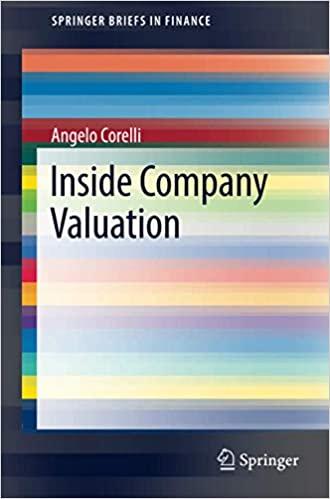Question
1. Last year Baron Enterprises had $350 million of sales, and it had $270 million of fixed assets that were used at 65% of capacity
1. Last year Baron Enterprises had $350 million of sales, and it had $270 million of fixed assets that were used at 65% of capacity last year. In millions, by how much could Baron's sales increase before it is required to increase its fixed assets?
Answer
| $170.09 | ||
| $179.04 | ||
| $188.46 | ||
| $197.88 | ||
| $207.78 |
2. While developing a new product line, Cook Company spent $3 million two years ago to build a plant for a new product. It then decided not to go forward with the project, so the building is available for sale or for a new product. Cook owns the building free and clear?there is no mortgage on it. Which of the following statements is CORRECT?
Answer
| If the building could be sold, then the after-tax proceeds that would be generated by any such sale should be charged as a cost to any new project that would use it. | ||
| This is an example of an externality, because the very existence of the building affects the cash flows for any new project that Rowell might consider. | ||
| Since the building was built in the past, its cost is a sunk cost and thus need not be considered when new projects are being evaluated, even if it would be used by those new projects. | ||
| If there is a mortgage loan on the building, then the interest on that loan would have to be charged to any new project that used the building. | ||
| Since the building has been paid for, it can be used by another project with no additional cost. Therefore, it should not be reflected in the cash flows for any new project. |
3. Which of the following statements is CORRECT? Assume that the project being considered has normal cash flows, with one outflow followed by a series of inflows.
Answer
| One drawback of the regular payback for evaluating projects is that this method does not properly account for the time value of money. | ||
| If a project's payback is positive, then the project should be rejected because it must have a negative NPV. | ||
| The regular payback ignores cash flows beyond the payback period, but the discounted payback method overcomes this problem. | ||
| If a company uses the same payback requirement to evaluate all projects, say it requires a payback of 4 years or less, then the company will tend to reject projects with relatively short lives and accept long-lived projects, and this will cause its risk to increase over time. | ||
| The longer a project's payback period, the more desirable the project is normally considered to be by this criterion. |
Step by Step Solution
There are 3 Steps involved in it
Step: 1

Get Instant Access to Expert-Tailored Solutions
See step-by-step solutions with expert insights and AI powered tools for academic success
Step: 2

Step: 3

Ace Your Homework with AI
Get the answers you need in no time with our AI-driven, step-by-step assistance
Get Started


